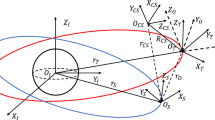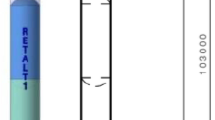Abstract
GOES-R series spacecraft feature a number of flexible appendages with modal frequencies below 3.0 Hz which, if excited by spacecraft disturbances, can be sources of undesirable jitter perturbing spacecraft pointing. To meet GOES-R pointing stability requirements, the spacecraft flight software implements an Active Vibration Damping (AVD) rate control law which acts in parallel with the nadir point attitude control law. The AVD controller commands spacecraft reaction wheel actuators based upon Inertial Measurement Unit (IMU) inputs to provide additional damping for spacecraft structural modes below 3.0 Hz which vary with solar wing angle. A GOES-R spacecraft dynamics and attitude control system identified model is constructed from pseudo-random reaction wheel torque commands and IMU angular rate response measurements occurring over a single orbit during spacecraft post-deployment activities. The identified Fourier model is computed on the ground, uplinked to the spacecraft flight computer, and the AVD controller filter coefficients are periodically computed on-board from the Fourier model. Consequently, the AVD controller formulation is based not upon pre-launch simulation model estimates but upon on-orbit nadir point attitude control and time-varying spacecraft dynamics. GOES-R high-fidelity time domain simulation results herein demonstrate the accuracy of the AVD identified Fourier model relative to the pre-launch spacecraft dynamics and control truth model. The AVD controller on-board the GOES-16 spacecraft achieves more than a ten-fold increase in structural mode damping for the fundamental solar wing mode while maintaining controller stability margins and ensuring that the nadir point attitude control bandwidth does not fall below 0.02 Hz. On-orbit GOES-16 spacecraft appendage modal frequencies and damping ratios are quantified based upon the AVD system identification, and the increase in modal damping provided by the AVD controller for each structural mode is presented. The GOES-16 spacecraft AVD controller frequency domain stability margins and nadir point attitude control bandwidth are presented along with on-orbit time domain disturbance response performance.
























Similar content being viewed by others
Reference
Goodzeit, N.E., Weigl, H.J.: Active vibration damping (avd) system for precision pointing spacecraft, U.S. Patent: 20080272240, issued date 6 Nov 2008
Acknowledgements
The authors wish to thank Alexander Krimchansky, Doug Freesland, Alan Reth, and Derrick Early at the NASA Goddard Space Flight Center and NOAA management for the opportunity to implement the Active Vibration Damping Controller on-board the GOES-16 spacecraft. The GOES-R series spacecraft are the first Lockheed Martin flight missions to implement AVD. This work was sponsored by the NASA Goddard Space Flight Center, Greenbelt, Maryland, under Contract NNG09HR00C.
Author information
Authors and Affiliations
Corresponding author
Additional information
This paper is based on a presentation at the 10th International ESA Conference on Guidance, Navigation and Control Systems—29 May-2 June 2017—Salzburg—Austria.
Rights and permissions
About this article
Cite this article
Clapp, B.R., Weigl, H.J., Goodzeit, N.E. et al. GOES-R active vibration damping controller design, implementation, and on-orbit performance. CEAS Space J 10, 501–517 (2018). https://doi.org/10.1007/s12567-017-0190-4
Received:
Revised:
Accepted:
Published:
Issue Date:
DOI: https://doi.org/10.1007/s12567-017-0190-4




